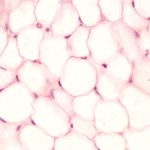Hindsight: AT-1 Blockade and Tissue Metabolism
Saturday, September 22, 2012 Continuing with our research on the potential function of the adipose tissue renin angiotensin system, in 2006, we published a paper in the American Journal of Physiology (Regul Integr Comp Physiol) where we examined the effect of systemic Angiotensin Type-1 (AT1) receptor blockade on tissue metabolism in obese volunteers.
Continuing with our research on the potential function of the adipose tissue renin angiotensin system, in 2006, we published a paper in the American Journal of Physiology (Regul Integr Comp Physiol) where we examined the effect of systemic Angiotensin Type-1 (AT1) receptor blockade on tissue metabolism in obese volunteers.
We studied 14 obese men, whe were treated for 10 days with the AT1 receptor blocker irbesartan or with placebo in a double-blind and crossover fashion.
At the end of each treatment period, we assessed skeletal muscle and adipose tissue metabolism using the microdialysis technique.
We found that treatment with irbesartan slightly attenuated the isoproterenol-induced glycerol response in adipose tissue but there were no discernible effects on interstitial glucose supply or lactate production.
We concluded from these (rather unspectacular) findings that AT1 receptor blockade in obese men does not reveal a major tonic ANG II effect on interstitial glucose supply, lipolysis, or glycolysis in skeletal muscle, either at rest or during beta-adrenergic stimulation.
The only significant result (if any) was that endogeneous ANG II may slightly increase adipose tissue lipolysis, which could (in theory) promote the redistribution of triglycerides from adipose tissue toward other organs (think ectopic fat).
Six years later, while the topic continues to attract some attention, very few of us still believe that the renin-angiotensin system has clinically relevant metabolic effects.
I guess nothing ventured, nothing learned.
AMS
San Antonio, TX


